Healthy Shopping List

The following is a comprehensive shopping list of healthy foods essential for low-fat, well-balanced meals. However, these foods are just recommendations. You should choose foods that are not only low in fat, cholesterol, salt, and sugar; but those that satisfy your physical and psychological hunger--those that you will enjoy. If you don't care for any of the following foods, simply replace them with other healthy foods that will be realistic in your low-fat lifestyle. Also, refer to the WF Healthy Recipes and make a list of the ingredients you need for the recipes you would like to try.
When planning a menu, ask yourself these important questions.
- Are the ingredients easy to use? If it is very complex and time-consuming, it is likely that your plan is unrealistic, and your low-fat meal will be unsuccessful.
- Is it versatile? You might not want to purchase ingredients that are only used in one recipe--they may end up spoiling in the back of the refrigerator. These are suggestions only and not intended as a complete list.
Vegetables
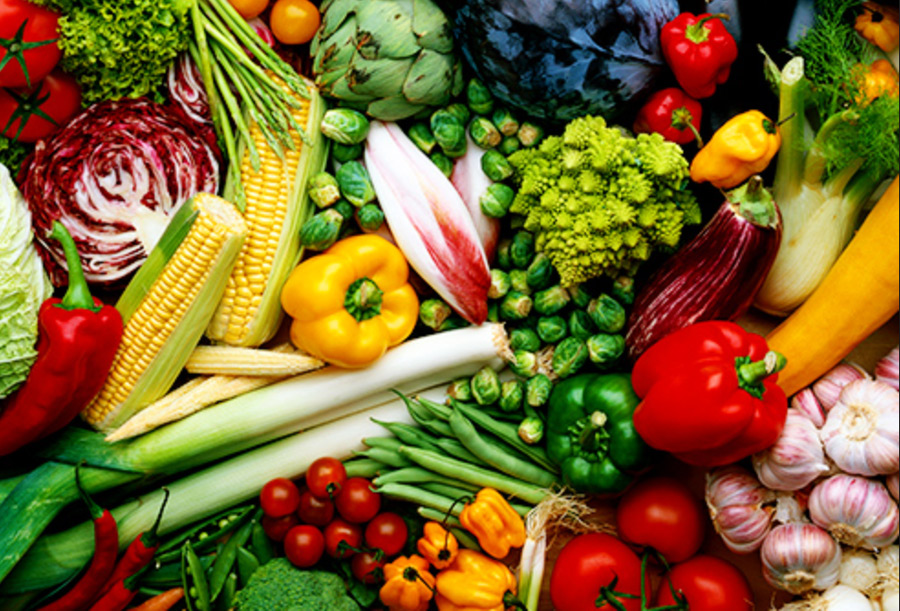
|
|
Fruits
|
|
Condiments
|
|
Fat Substitutes for Cooking and Baking
|
|
Meats
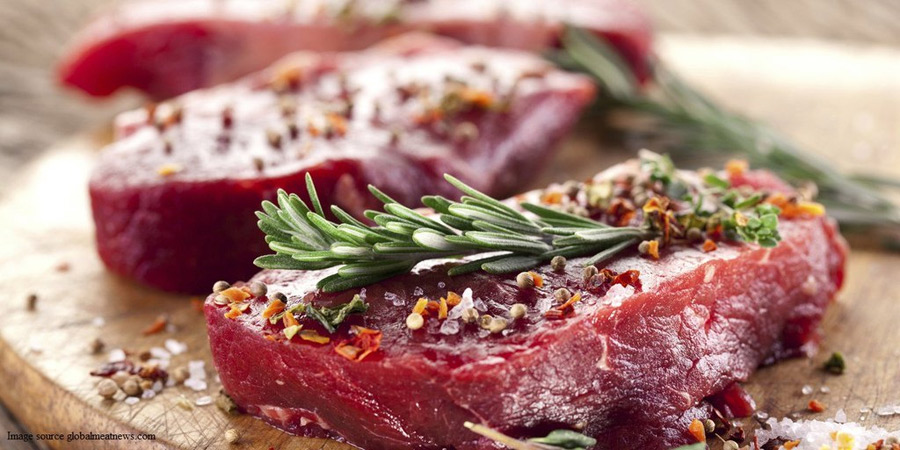
|
|
Dairy Products
|
|
| * Refer to Fat Substitutes ( above) for other dairy products | |
Grains
|
|
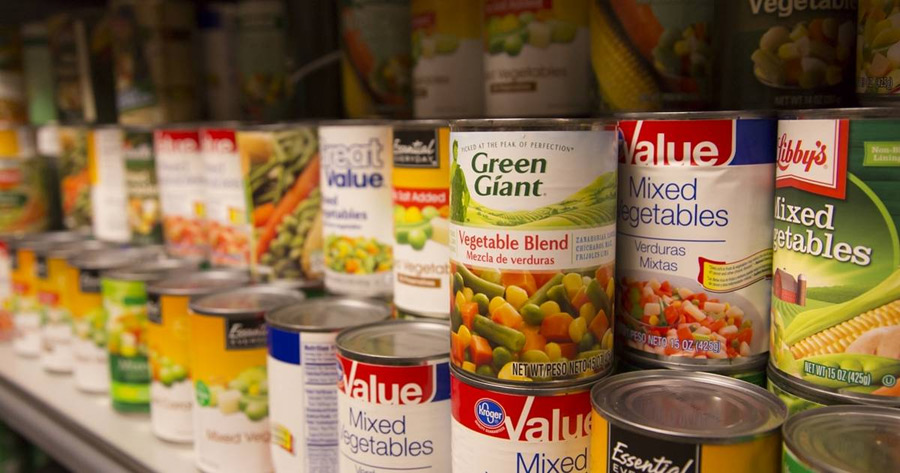
Canned Foods
|
|
Herbs and Spices
|
|

Snacks and Desserts
|
|
Low-Fat Shopping Stategies
The following are low-fat shopping strategies for each of the food groups.
Fruits and Vegetables
You should try to eat at least three to five servings of both fruits and vegetables every day. A serving is any of the following: 1/2 cup chopped vegetables, a cup of salad, 3/4 cup 100 percent fruit juice, a medium-size piece of whole fruit, 1/4 cup of dried fruit or 1/2 cup fruit. Fruits and vegetables are so valuable in our diet because they are rich in vitamins, minerals, and fiber. In addition, they also contain antioxidants and phyto-chemicals which have been shown to prevent cancer, heart disease, strokes, and other diseases.
Make a list of all the fruits and vegetables you enjoy eating. Think of ways to include fruits and vegetables in convenient, healthy, snacks. Carrots, celery, apples, bananas, oranges, mango, kiwi, and berries are great choices. Also, decide which fruits can be added to other snacks to enhance flavor. For example, bananas and dried fruits can be added to cereal or low/nonfat yogurt. Also think of ways to add more fruits and vegetables to your recipes or meals. Think of all the fruits and vegetables that you could add to your turkey or cheese sandwich: sprouts, onions, tomatoes, pickles, mushrooms, lettuce, etc. Try adding some of your favorite vegetables to your spaghetti sauce or to a home-made healthy nacho. Keep experimenting with ways to include both fruits and vegetables into your daily routine. This will not only add flavor and texture to your meal; it will help you get the nutrients you need for a healthy diet.
The following suggestions are ways to incorporate fruits and vegetables into every meal.
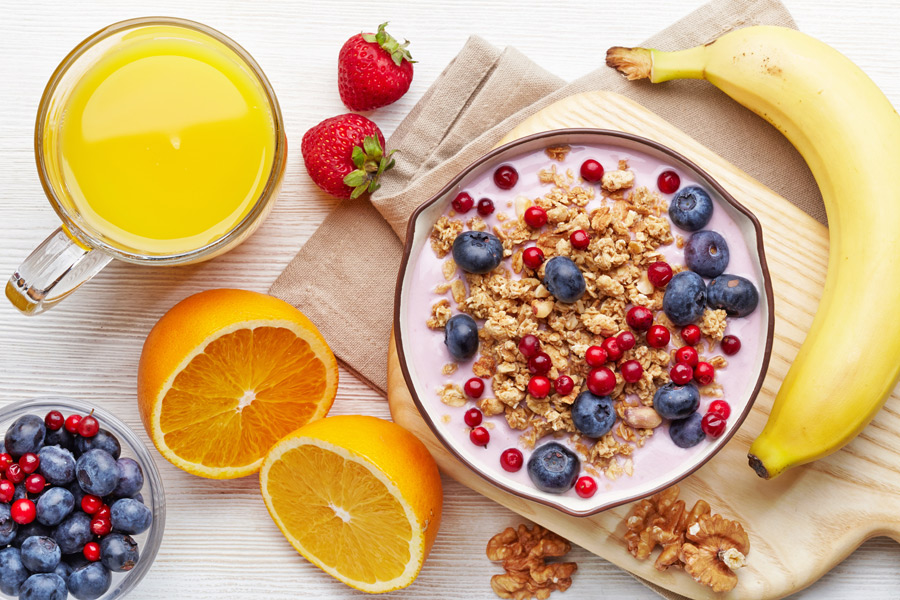
Breakfast
- Instead of coffee, drink eight ounces of orange or grapefruit juice.
- Put a half cup of fruit (sliced bananas, strawberries, blueberries, dates, raisins, or other dried fruits) on your cereal, pancakes, or yogurt.
- Cut up your favorite vegetables and mix them in with scrambled eggs or in an omelet.
Snacks
- Instead of soda, have an 8-oz. glass of vegetable juice, grape juice, apple juice, lemonade, or cranberry juice.
- Try low/nonfat fruit bars or dried fruits such as apples, mangos, pineapples.
- Always keep fruits (apples, bananas, grapes, oranges, etc.) and cut vegetables (carrots, celery, cucumbers, etc.) in convenient places such as your briefcase, gym bag, desk drawer, etc.
- Mix fresh fruits and/or dried fruits with yogurt, frozen yogurt, low-fat granola, cereal, and Jell-O .
Lunch
- Have a salad. Add as many of your favorite vegetables as possible. A large salad with mixed vegetables can count for 2-3 servings.
- Add as many of your favorite vegetables to your sandwich as possible.
- Eat a bowl of minestrone or vegetable soup.
- Include fruits and cut-up vegetables with your lunch.
- Have a baked potato without butter or sour cream. Try it with low/nonfat cheese, nonfat sour cream, sweet and sour sauce, salsa, or fat-free salad dressing.
Dinner
- Make vegetables a part of the main dish: Add vegetables to chicken or tofu stir-fry. Add plenty of vegetables to a low-fat lasagna.
- Instead of pepperoni or Canadian bacon, add your favorite vegetables to a pizza with low-fat cheese.

Desserts
- Slice berries, kiwi, or bananas onto frozen yogurt or nonfat ice cream.
- Add berries, kiwi, bananas, or other fruits to the top of angel food or other low-fat cakes.
-
Add your favorite fruit to Jell-O or puddings.
Dairy Products
Dairy products are rich in calcium, protein, and vitamin D. Three cups of milk, three cups of yogurt, or three to five ounces of cheese will cover your daily value of calcium. However, the requirements for women, especially post-menopausal women increases to four to five servings of calcium rich foods. Adequate calcium intake provides strong teeth and bones and may also help prevent colon cancer and high blood pressure. If you are a vegan, are lactose intolerant, or just don't like milk, other great sources of calcium are broccoli, kale, and turnip greens. Unfortunately, milk and other dairy products can be very high in fat and cholesterol. Whole milk gets almost half of its calories from fat, and most cheeses contain more than 50 percent fat. However, today there are nutritious low or nonfat versions of just about every dairy product you can name. The following is a list of foods that are very healthy, delicious, and essential for a healthy lifestyle.
Yogurt
A cup of yogurt provides 300 to 450 milligrams of calcium which is 20-40 percent of your daily requirement. It is also a great source of B vitamins, phosphorus, and potassium. Low-fat or nonfat yogurt is a great food for three different purposes: it is a great substitute for both sour cream and whipping cream; it supplies great taste and texture to many foods such as a baked potato or angel food cake; it is a great snack (especially when you add fruits such as bananas, berries, dates, etc.). Be sure to choose low-fat or nonfat varieties. Regular yogurt gets almost 50 percent of its calories from fat. If you are lactose intolerant try using yogurt as your primary dairy product because the cultures aid in digestion.
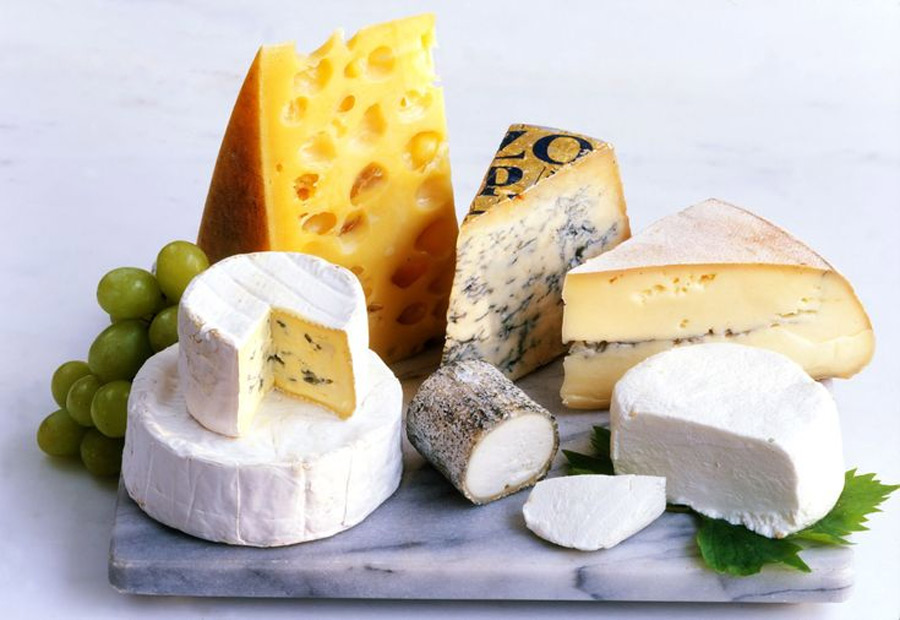
Cheeses
Cheeses make great toppings for many foods. Almost everyone loves the taste and texture of cheese. Unfortunately, cheese is loaded with fat. Most cheeses average between 40-60 percent of calories from fat. Try a low-fat version of your favorite cheese, and/or cheeses of the part-skim variety (mozzarella, ricotta, cottage cheese, low/nonfat cream cheese, etc.). If you are used to eating regular cheeses, don't expect low or nonfat cheeses to meet your standards at first. Eventually, you will develop a taste for a very low-fat or even nonfat version. Once again, however, make the change gradually. Try mixing low-fat with nonfat cheese before jumping straight to the nonfat version. You may also want to first try switching to white cheeses such as mozzarella, ricotta, Swiss, and parmesan. These are lower in fat because they are made with low-fat milk instead of whole milk.
Milk
If you drink whole or 2 percent milk, gradually make a switch to 1 percent and perhaps even skim (nonfat) milk. Whole milk gets 35-45 percent of its calories from fat; 1 percent only gets 23 percent and nonfat supplies only 4 percent of calories from fat, and all of the good stuff is still left in. You may also want to try several brands of skim milk; some are more palatable than others. Make the switch to a lower-fat version gradually by mixing the type you are used to with the next lowest in fat. For example, if you drink 2 percent milk, mix half a cup of 2 percent with half a cup of 1 percent. Once you have developed a preference for this mixture, try a glass of 1 percent, and so on.
Eggs
Eggs are a great source of calcium and protein. However, each egg contains 5 grams of fat and 210 milligrams of cholesterol. Eating only two eggs a day would put you well over the recommended daily limit of 300 milligrams of cholesterol. It is also recommended that you don't exceed four whole eggs a week. Egg whites (eggs without the yolk) are fat and cholesterol free and contain almost all of the protein. For cooking and baking, simply use three egg whites for every whole egg. For example, instead of using three eggs for an omelet, try using three egg whites and one whole egg. There are also low-fat egg substitutes that you can buy for cooking and baking.
Meats
Unfortunately, no other food in the American diet is higher in fat than red meat. In addition, pork products are also high in fat. Beef and pork are not only high in total fat; they are also high in saturated fat and cholesterol. High consumption of these meats has been shown to increase heart disease, obesity, cholesterol, and colon cancer. This does not mean you have to avoid meat altogether, but you will want to eat it in moderation and gradually switch to the leaner meats: chicken, turkey, and fish. There are really two things to look for if you want to continue eating red meat and still live a low-fat, healthy life-style: portion size and fat content. You should not eat more than three ounces of lean meat a day, roughly the size of a deck of cards. Many people are afraid of becoming protein-deficient when cutting back on meats. But only 12-20 percent of the calories in your diet should be protein. If you are eating 2,500 calories a day, you will need approximately 300-500 calories of protein, or 75-125 grams of protein. Three ounces of lean meat and a serving of a dairy product will satisfy that.
To select the leanest beef, check the label. Meat marked "select" is the leanest (39 percent fat ). The "choice" grade has more (44 percent fat); and "prime" is the fattiest (48 percent fat). Also, when selecting ground beef, choose varieties labeled "round," "loin," "top sirloin," or "extra lean" because they are the leanest.
In addition to labels, check the meat itself for fat and color. Look for cuts with the least amount of visible fat. Meat with white streaks of fat is obviously going to be much higher in fat. Also, if the meat is really dark red, it is a lot leaner than meat that is pink or gray.
In general, chicken and turkey are leaner than beef and pork, but you still need to compare the fat content for each one. Some ground beef, for example, is leaner than chicken or turkey. This is mainly because some chicken or turkey still has the skin on it, which is loaded with fat and cholesterol. In addition, the dark meat of chicken or turkey contains a lot more fat than the white meat. The legs and back of chicken and turkey are the dark meat. Try to stick to the breast (white meat) and do not eat the skin. Ground turkey (skinless, of course) can also be a great substitute for ground beef. Refer to the WF Healthy Recipes for great meal ideas using chicken, turkey, and lean choices of ground beef.
When shopping for sandwich meats, stay away from salami, bologna, pepperoni, and bacon. Once again, try the leaner white meats such as chicken, fish, and turkey. You can also try lean versions of roast beef and ham.
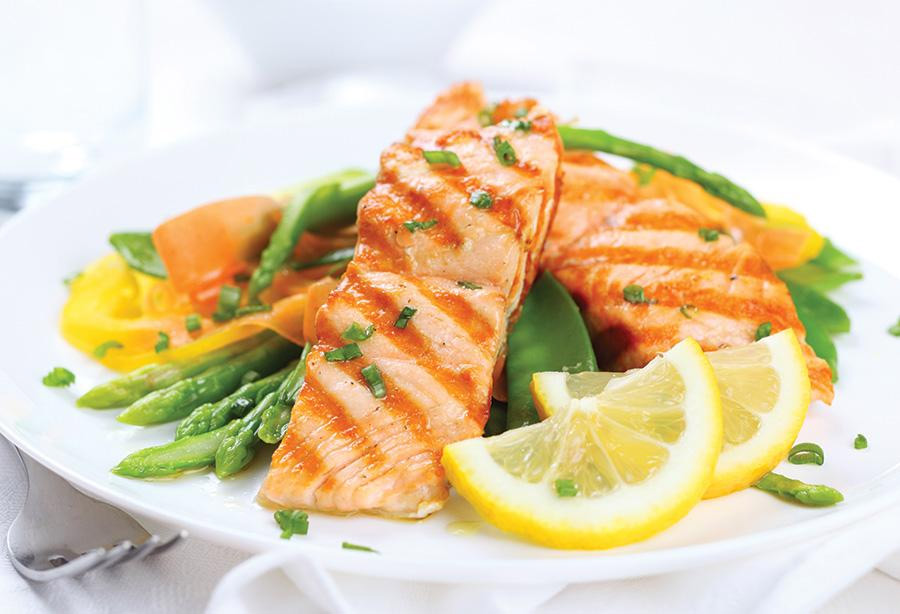
Fish
Fish is generally a very healthy way to get protein and other important nutrients found in beef without also getting the fat and cholesterol. Fish contains all the essential amino acids. You only need to eat three ounces of fish every other day to satisfy your daily protein needs. Fish is also a good source of many vitamins, which you can't always get from plant sources.
Fish usually only contains 5-10 percent fat. Unless you fry it, drown it in tartar sauce or butter, or buy processed fish sticks or crab cakes, you can't go wrong with fish. Also, stay away from tuna packed in oil; tuna packed in water is almost fat-free. Even when you eat a more fattening fish, such as salmon, it is still only between 6-10 percent fat. When you consider that a cheeseburger is 45 percent fat, you are really eating a low-fat food no matter which fish you choose.
Even seafood considered to be high in cholesterol is better than eating red meat. Shrimp and lobster may be higher in cholesterol than other seafood, but their total fat is still only 1-2 percent. A three-ounce serving of shrimp (about 7 or 8 shrimp) has about 160 milligrams of cholesterol, about half of your recommended daily limit. Compare that to two eggs which contain more than 400 milligrams. As long as you are not eating shrimp, lobster, or crab in hollandaise or tartar sauce or fish that is fried or dipped in butter, you are much better off than eating beef or pork. Try flounder, trout, cod, catfish, or shark; if you want to satisfy your red meat craving, try swordfish, monkfish, or fresh tuna, all of which have a great meaty texture. Refer to the WF Healthy Recipes (Non-Vegetarian) for great ideas on how to make a delicious, healthy fish meal.
Canned Foods
The following list of canned foods make for delicious, healthy recipes. Keep them in stock.
Canned Vegetables
Canned vegetables make a very low-fat, nutritious addition to any meal; they are also quick and convenient. Vegetable soup, corn, green beans, and many others will add a quick zip to your meal. You don't have to use canned vegetables exclusively as a side dish. In fact, there are many other ways you can use canned vegetables. Add them to soups. Add them to a green salad. Throw some canned carrots, corn, and beans together with a marinade. Or mix some string beans or collard greens with onion and vinegar. Experiment with what works best for you.
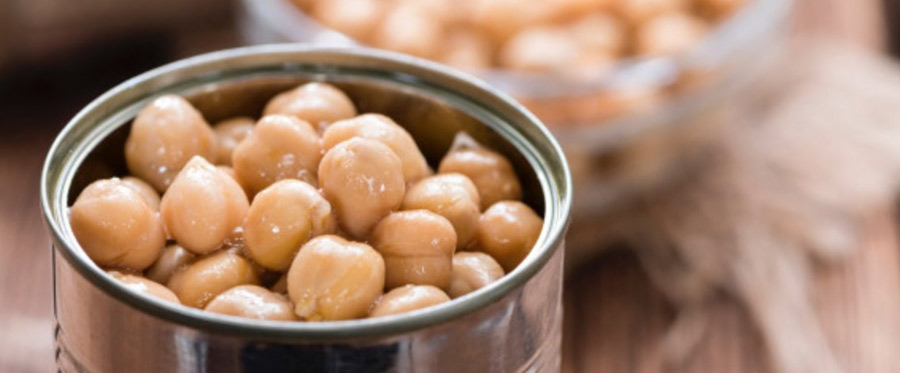
Canned Beans
Beans are not only low in fat; they are also a good source of fiber, carbohydrates, protein, and other nutrients. They have a lot of the same nutrients as meat, without the fat and cholesterol. Canned beans are convenient and healthy, but they do contain sodium. Also, many canned refried beans contain lard and other added fats; most stores now carry nonfat, low-fat, low sodium, vegetarian refried beans--they still taste great. Both refried beans and black beans are great with rice, or in nachos, burritos, and enchiladas. Black beans are also wonderful in soups and salads. Baked beans go great with sandwiches, chicken, or garden burgers. Note: if the baked beans have added pork, they will be higher in fat; try getting vegetarian or low-fat kinds. You won't miss the fat at all.
Canned Soups
To enjoy the great tastes of soups while still keeping the fat down, go for the broth-based soups, like chicken noodle, minestrone, vegetable, and rice instead of cream-based soups, like clam chowder, cream of broccoli, or potato. Soups containing pasta and beans, like minestrone, will give you a nutritious boost and are very filling. Lentil soup is one of the best soups you can buy, since it is very low-fat and offers about 8 grams of fiber per serving.
Some soups have as much as 1,000 milligrams of sodium per cup, almost half of your recommended daily limit of 2,000 to 2,500 milligrams. However, more and more reduced-salt varieties are available too. It is important to understand the reduced-salt terms. "Sodium-free" means the product has less than five milligrams per serving, "very low sodium" means it has less than 35 milligrams per serving, and "low sodium" means it has 140 milligrams or less per serving.
Canned Fruits
Canned fruits are a quick and easy way to get good sources of vitamins, minerals, and fiber; they also are very convenient. In addition to eating the fruit right out of the can, be creative and add it to other healthy foods as well. Try mixing canned fruit with low/nonfat yogurt. Used canned berries or peaches as a topping on angel food or low-fat pound cake. Also, try placing canned pineapple rings around various meats and poultry.
Many of the fruits' nutrients are in the liquid that the fruit is packed in. This is because the nutrients dissolve in water. Many people drink the fruit liquid right from the can. There are also other ways you can use this nutrient-packed liquid without throwing it away. Cook or stir-fry vegetables in this juice. Put the left over fruit juice in ice cube trays and freeze it; you can eat the ice cubes plain or add them to drinks for extra flavor.
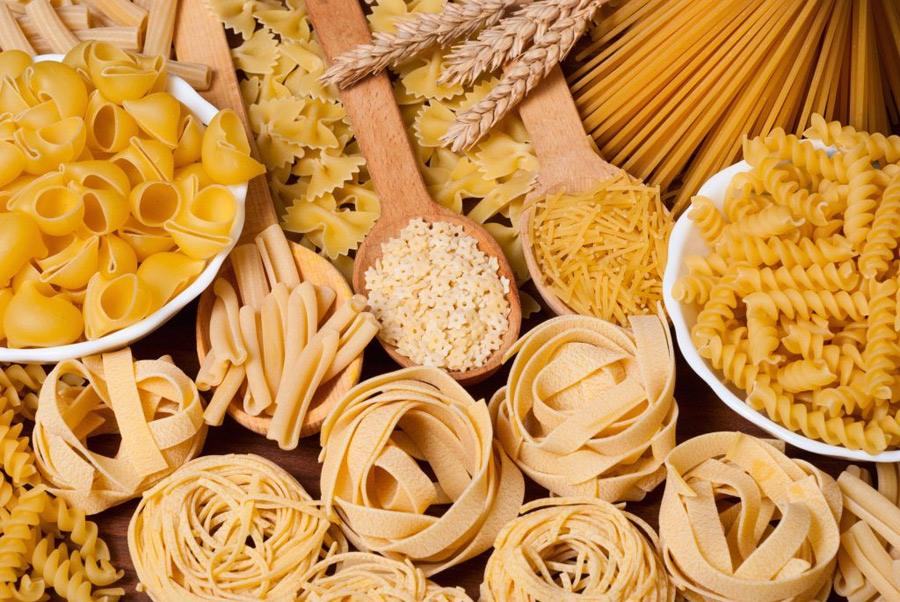
Grains and Pasta
Grains make up wonderful, healthy foods such as breads, cereals, pastas, and rice. It is important, however, to choose your grains wisely. Try whole grain products for their fiber. Fiber helps you avoid cancer, helps lower your cholesterol, and helps your digestive track function properly. Try to get 25-35 grams of fiber a day. Unfortunately, fiber grams do not add up easily. Two slices of whole-wheat bread contain three grams. On average, a bowl of cereal has 2-3 grams though there are many tasty high-fiber cereals on the market. Again, read the label. A cup of enriched spaghetti contains 2-3 grams. And one bagel has 5 grams. Therefore, you should try to eat at least 6 to 11 servings of grains and cereals a day. In addition to fiber, whole grain foods also supply vitamin B and E and some trace minerals.
Baked Goods
Breads have varying amounts of fiber, between one and three grams per slice. When shopping for breads, look for products made from whole grains; these should have "whole wheat" or "whole grain" on the label. Don't be fooled by regular wheat bread; it is actually white bread. Since flour is made from wheat, it is a legitimate claim, but "wheat" bread is simply white bread with caramel coloring and a brown wrapper. It is certainly okay to eat breads not made from whole wheat, such as French bread, sourdough, rye, pumpernickel, and so on because they are a source of complex carbohydrates, which should make up about 60 percent of your daily calories.
Bagels also make a quick and easy breakfast or snack item. They are rich in complex carbohydrates and low-fat. Bagels come in a variety of flavors and are delicious with low/nonfat cream cheese or jam.
Muffins are often thought of as healthy, but check the label for fat, saturated fat, and the percentage of calories from fat before you buy. Most muffins are very fattening. There are, however, low and nonfat versions which still taste good and make great breakfast foods or snacks, especially bran varieties (high in fiber). Donuts and croissants are killers when it comes to fat. Some donuts contain as many as 17 grams of fat; croissants average 14 grams of fat. Donuts are fattening simply because they are deep fried in oil; croissants are fattening because the dough is repeatedly rolled and layered in butter.
Pasta
Pasta is both delicious and healthy, as long as you make smart choices. Some
pastas have ingredients other than flour, which makes them nutritionally
different. Some kinds of pasta contain egg, which means more fat and as much as
145 milligrams of cholesterol per serving. Others are made with either white
flour, wheat or spinach and are enriched with extra nutrients. Try to replace
egg noodles with wheat or spinach noodles; this will boost your nutritional
intake. Many pasta sauces are high-fat. Creamy sauces, like alfredo, are loaded
with fat. Meat sauces too can be high in fat. Instead, try tomato or marinara
sauces; add your favorite vegetables for additional nutrients.
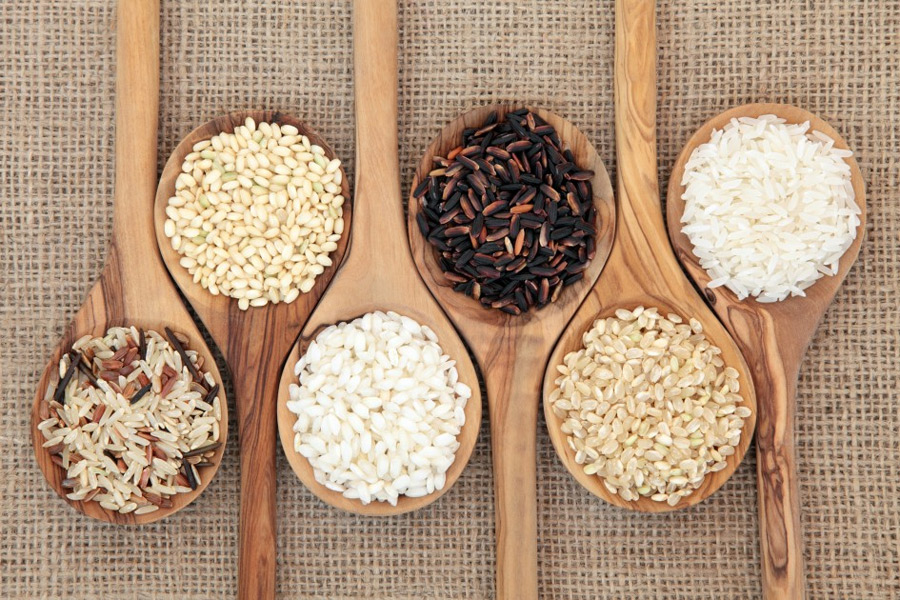
Rice
Rice comes in many varieties, but the most commonly used are white and brown rice. White rice is enriched and, therefore, provides more thiamin and iron. However, brown rice naturally supplies a good source of fiber, calcium, phosphorus, and vitamin E. Rice makes a wonderful side dish to any meal and with steamed vegetables can make a hearty main dish. Rice is also good in casseroles or mixed with other foods, like beans. Try adding salsa or sweet and sour sauce to rice for more flavor. Several spices also go very well with rice, such as, cloves, curry powder, chili powder, and ginger.
Cereals
It is very important that you eat breakfast not only for energy but also to kick-start your metabolism. Cereal, especially with skim milk and added fruit (bananas, dates, berries), and juice is one of the best ways to start the day. It is quick and easy, a good source of essential nutrients, and it's much lower in fat than many other breakfast foods, like eggs, bacon, sausage, or donuts.
Some cereals have a nutritional edge over others. Check the labels for those that offer less sugar and are low-fat, and that have at least two grams of fiber per serving. If chosen wisely, cereals can be a great source of fiber. Unfortunately, many cereals high in fiber are low in taste. Stock your shelves only with cereals you like. This will greatly increase the chance you'll actually eat them. If you buy brands that you "should" eat but they taste like cardboard, chances are you'll skip breakfast altogether. Try adding fruits to your cereal. You might even want to buy two types of cereal: one low in fat and high in fiber, and one low in fat and a little higher in sugar, to make it more enjoyable. Mix these together and you have a delicious and healthy way to start the day.
Don't just limit cereal to breakfast. Cereals make great snacks. Try buying a jumbo package containing several tiny boxes of cereal. Put them in your brief case, gym bag, desk drawer, or car glove compartment; with low/nonfat milk, you've got a tasty low-fat snack. However, beware of "healthy" granola. Most people think of granola as natural and healthy. Unfortunately, even the low-fat varieties are higher in fat than most other cereals. However, low-fat granola is a great condiment when added to other cereals to make them a little tastier.
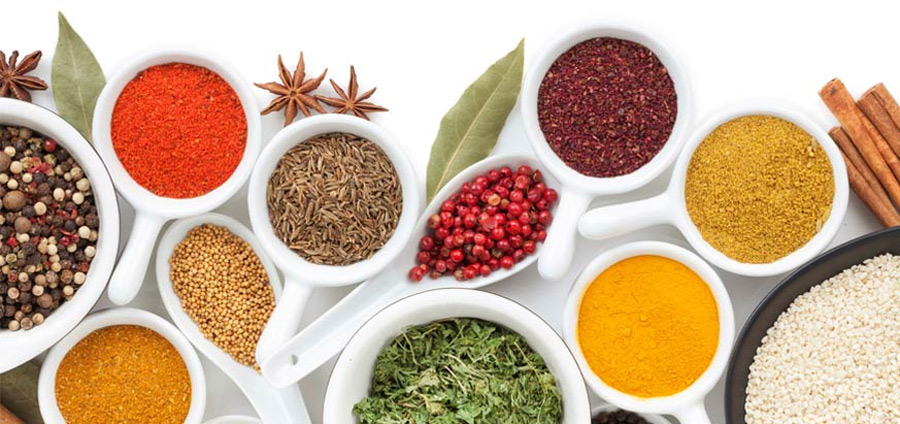
Herbs and Spices
Cutting down on fat and salt often leaves foods tasting bland. It is important to continually experiment with herbs and spices to discover what works best with the meals you enjoy most. Here is a list of herbs and spices and the healthy foods they go well with:
Basil and Oregano
These spices are great for tomato-based dishes like pasta sauces, soups, and pizza. Oregano is also very good with beef (extra lean); try it with hamburgers. Or try it with pork (extra lean), vegetables, and many kinds of seafood.
Curry Powder
This spice has a similar taste to butter and goes well with potatoes, rice, pasta, and chicken. It also works well in place of salt. Some people enjoy it on popcorn!
Ginger
Ginger is a strong spice that goes very well with rice, Japanese noodles, chicken, lean beef, and carrots.
Red Pepper, Chili Pepper, and Paprika
All are all very good flavor enhancers. Red pepper is often used in stews, baked beans, pasta, and several seafood dishes. Chili pepper is milder and helps make chili powder, which goes very well with chili, rice, barbecue chicken, potato chips (baked/low-fat variety), dips, sauces, and Mexican foods. Paprika will color food as well as flavor it. It goes well on macaroni salads, potato salad, and on baked potatoes.
Garlic and Onion
Both come in different forms: powdered, granulated, ground, chopped, or sliced. If you actually want to see and feel the garlic or onion on your food, buy it whole, minced, chopped, or sliced. If taste alone is what you're after, powdered or granulated will work fine. Both onion and garlic go great on chicken, fish, lean beef, potatoes, vegetables, and pasta. Scientific research has shown that garlic may lower blood pressure, cholesterol, and prevent cancer.
Cinnamon
A sweet spice, cinnamon is very good in desserts. Cinnamon is a great way to add more flavor to low-fat desserts without more sugar. Nutmeg and allspice also work well. Cinnamon is also very tasty sprinkled on muffins, toast, and popcorn.
Other helpful spices include rosemary, sage, tarragon, marjoram, cumin, saffron, thyme, dry mustard, and dill, all of which work well with lean meats like chicken, fish, and beef.
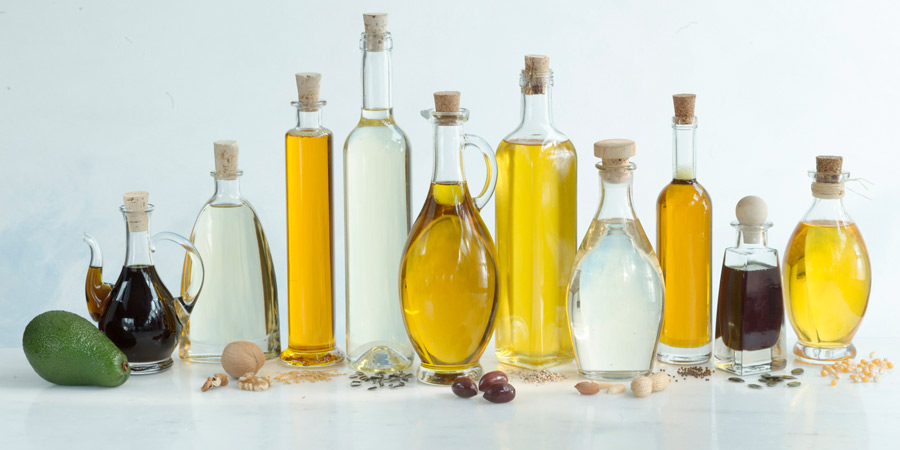
Oils
When cooking with oil, use only small amounts, and replace those high in saturated fat with oil higher in unsaturated fat. Saturated fat clogs your arteries; you want to avoid saturated fat whenever possible and keep your total saturated fat calories to less than 10 percent of your daily food intake. Four oils are high in saturated fats: coconut, palm, palm kernel, and cocoa oil. You should not only avoid purchasing these oils, also stay away from commercial baked goods and processed foods made from them.
Unsaturated oils come in two types: monounsaturated and polyunsaturated. Mono-unsaturated oils include olive, peanut, and canola oils. Poly-unsaturated fats include corn, safflower, and sesame oils. There is little evidence that one is better for you than the other. Many studies, however, have shown that one specific oil, olive oil, may lower levels of LDL ("bad") cholesterol. You can use olive oil as a substitute for every oil in the kitchen--not only for frying and sauteing, but for baking as well. Three different grades of olive oil are available: pure, virgin, and extra-virgin. Each one varies in taste and color. If you are shopping for an oil for stir-frying or baking, pure olive oil is the best. Virgin and extra-virgin oil are higher grades and are best for light sautes or for drizzling on pasta, vegetables, or bread.
Remember, no one says you have to use oil when cooking, baking, or as a topping. Try apple juice, apple sauce, cooking sherry, wine, and broth instead of oil for cooking. Or you might first want to try cutting back on the amount of oil a recipe calls for and add one of the above liquids. Nonfat salad dressings or marinara sauce can replace oil as a topping on salads, pastas, or bread. Pureed fruits and egg whites also work very well as oil replacements--refer to the backing section for more ideas.
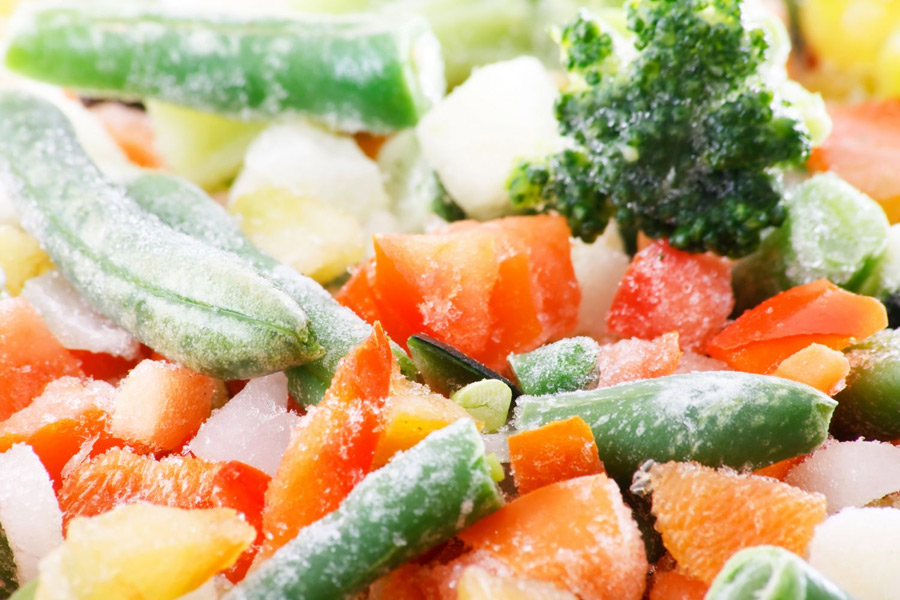
Frozen Foods
It is very important to pay special attention to the labels on frozen foods. Many products have few calories simply because they consist of smaller proportions. This is one of the ways manufactures keep the total amount of fat down. Concentrate more on percentage of calories from fat, not the total number of calories. Again, fewer calories may mean less food, not necessarily less fat.
As a rule, look for frozen dinners with 7 grams of fat or less; saturated fat should be 2-3 grams of fat or less. Make sure that the percentage of calories from fat is less than 25.
Since many of these products are very small in portion, they can be a great addition to a healthy, low-fat meal. For example, Budget Gourmet Light and Healthy has a great rigatoni in cream sauce with broccoli and chicken. Put this on a baked potato and you've got a quick and healthy meal.
Other cautions on frozen foods:
Investigate the ingredients: Check the order of ingredients on the package. Not all meat in frozen food products is really all meat--some are mixed with soy or wheat products to make them lower in fat. If the frozen food product is supposed to be a cheese dish and cheese is not one of the first few ingredients, they are probably using other less nutritious ingredients such as zantham gum.
Check the sauce: Frozen vegetables or dinners with butter or cream sauce are almost always high in fat. Be wary of the all-in-one meals. Many of these frozen meals are very low in flavor and provide little satisfaction. You are better off getting a frozen rice or pasta meal and adding bread and a salad full of fresh vegetables. Many frozen meals have less than a 1/2 cup serving of vegetables.
Frozen desserts: For dessert, try frozen nonfat yogurt, fruit bars, sorbets, and popsicles. Don't forget, however, that these foods can be high in sugar and thus high in calories. Also, when checking the fat content on frozen dessert labels, pay close attention to the serving size. Your favorite low-fat yogurt may only have three grams of fat per serving, but that's for 1/2 cup. Most people eat at least 1-1/2 cups at a sitting, which adds up to 9 grams of fat per actual serving.
Try making your own frozen dinners. This way you will always have a healthy meal prepared to heat up in the microwave. They will also taste a lot better and most likely be a lot healthier than store-bought meals. You have control over the nutritional value and you decide the portions.
It is not difficult to freeze your own delicious, healthy dinner. Each time you cook a good, low-fat meal, prepare enough for several more meals. Then break the "leftovers" into meal-size portions and keep them in the freezer. Here's a list of healthy homemade food ideas:
Next time you make a pasta meal, cook all of the noodles. Store the noodles with your favorite tomato or marinara sauce in a plastic container or plastic bag. Baked pasta dishes such as lasagna work equally well.
Stews, chili, and soups also make great frozen meals. Store them in large plastic containers.
A rice-and-bean mixture will store well. Simply defrost and use for nachos, burritos, or other delicious Mexican meals.
Next time you grill or barbecue hamburgers or bake chicken or fish, make extra. When the meat cools down, wrap portions individually in freezer wrap or Ziplock bags and store in the freezer. If you don't have a microwave, simply take them out of the plastic, wrap them in aluminum foil and heat them in the oven. Note: When making hamburgers, be sure to use extra lean ground beef and try mixing vegetables and rice into the patties. When preparing chicken, cut all the excess fat off. These meats can also be used in stews, chills or casseroles.
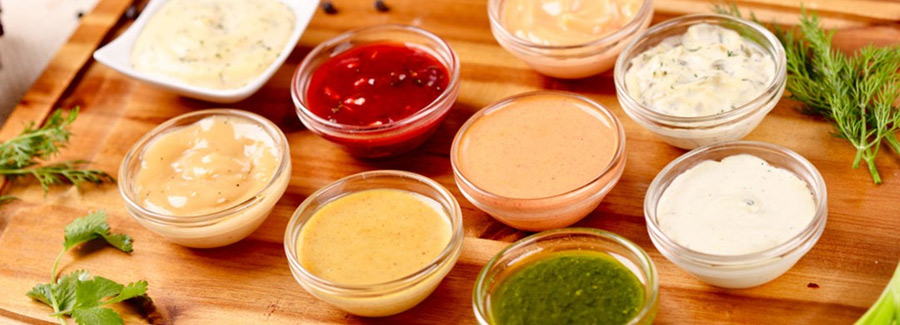
Condiments
Condiments are those extras we add to foods to enhance flavor; many healthy foods turn into fattening foods because of the condiments we add. For example, a healthy, carbohydrate-rich baked potato turns into a high-fat food when we add butter, sour cream, cheese, or bacon bits. You don't, however, have to give up flavoring your food. Food should be enjoyed. To cut down on fat and salt, though, you must make some changes. Here are ways to add flavor and texture to your food:
Creamers
Creamers are high in saturated fat and cholesterol. Try using nonfat dry milk powder instead (or mixed in at first).
Butter/Margarine
Butter contains saturated fat, known to increase cholesterol levels and contribute to heart disease. Margarine contains trans-fatty acids, which are as bad if not worse. Both butter and margarine contain about 11 grams of fat per tablespoon. However, in that serving, margarine has no cholesterol and only two grams of saturated fat compared to butter's seven grams--so if you must, margarine may be a better choice. And the softer the margarine, the fewer trans-fatty acids. Use butter or margarine sparingly on foods. As a alternative topping, try apple butter, syrup, jam, or low/nonfat sour cream or low/nonfat cream cheese instead. Keep experimenting with new flavors and decide what tastes good to you. As you learn to appreciate and prefer other toppings, you will hardly miss butter or margarine.
Ketchup and Mustard
Try replacing mayonnaise with ketchup, mustard, and low/nonfat dressings. One tablespoon of mayonnaise contains 11 grams of fat. There are low and nonfat varieties, but many other great condiments can replace mayonnaise all together. Low/nonfat dressings go well not only on salads but on sandwiches as well. Mustard is fat-free, and contains no calories. What's more, mustard adds a lot of flavor to any type of burger or sandwich. The only mustard to watch out for are those combined with mayonnaise; these have just as much fat as a low-fat mayonnaise.
Although ketchup has more sugar than other condiments, it isn't bad for you. It is also low-fat and has about the same amount of salt as mustard. Keep your eye out for brands with less sugar and salt.

Soy Sauce
Try to limit the amount of soy sauce you use, or purchase the reduced salt varieties, especially if you are concerned about sodium intake. Some brands have as much as 3,300 milligrams of sodium in 1/4 cup. The recommended daily sodium limit is 2,400 milligrams. Worcestershire sauce is a great alternative to soy sauce because it only has 150 milligrams of salt per serving.
Salsa
Unlike most condiments, salsa can actually be good for you, especially if it is a brand low in salt. Look for salsa with less than 150 milligrams per serving. Salsa is considered a healthy food because the vegetables are packed with antioxidant vitamins and minerals and phytochemicals that help fight infections and diseases. Salsa goes great not only on low-fat Mexican food, but also on baked potatoes and in soups.
Yogurt
Try using plain low/nonfat yogurt in place of sour cream. This is a hard adjustment for most at first. After a while you will get used to it and actually prefer the flavor and texture. It also works as a healthy alternative to cream cheese in many recipes. Using low/nonfat cream cheese is another way of cutting down extra fat.
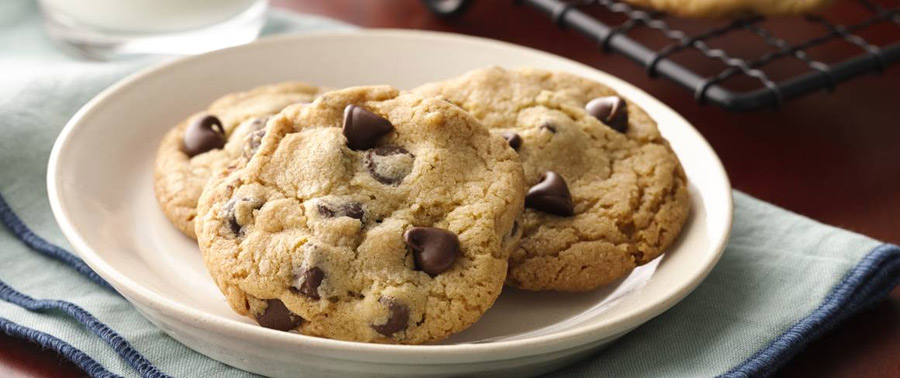
Desserts
The only way you'll ever stick with a low-fat lifestyle is by enjoying
yourself in the meantime. What really counts is fat consumption over the long
haul, not what you decide to eat tonight. Many people assume living low-fat
means giving up desserts all together. Remember, the non-diet approach to a
healthy lifestyle is not denying yourself foods you really enjoy, but rather
making small, healthier changes and eating in moderation. If you give up
desserts entirely, chances are you'll soon binge and give up living the low-fat
lifestyle--simply because it wasn't worth giving up the foods you love.
In stores today, literally every kind of dessert you can imagine comes in a low-fat or reduced calorie version: nonfat ice cream, brownies, cakes, cookies, pastries, etc. Although some products don't come close to tasting like the real thing, many are actually very satisfying and tasty. Experiment with different low/nonfat products at the store and decide which foods best satisfy your craving for sweets and satisfy your hunger.
Many people who switch to low/nonfat desserts actually consume more calories
now then they did before when they were eating high-fat desserts. In order to
make low/nonfat products taste good, many manufactures replace the fat with
nearly twice the amount of sugar. Therefore, many low/nonfat products may have
just as many calories as the original version--be aware of these products.
Furthermore, many people eat twice as many low/nonfat products than high-fat
desserts--they think it's okay to eat as much of these foods as they want since
they're low/nonfat. These products should be consumed in moderation--just like
any other food that doesn't provide high-nutritional value.
Remember, look closely at the labels. Pay as much attention to the percent of calories from fat as you do to the actual number of fat grams. Make sure that the product has less than 25 percent of its calories coming from fat. Also, pay close attention to the serving size. If your favorite reduced-fat cookie has only 3 grams of fat per serving, and the serving size is only two cookies--by the time you have eaten six cookies, you have tripled the fat and calories.
Some companies reduce the fat by giving you a smaller serving size. For example, a low-fat Hostess cupcake has 3.5 fewer grams of fat and 50 fewer calories than the regular version. But it weighs 13 percent less. Regular Twinkies fat and calorie information is measured by using two cakes as a serving size, but the low-fat version uses only one cake. So it is important to check the weight and serving size, in addition to the percentage of calories from fat and the fat grams.
Some healthy, tasty dessert recommendations are fig and fruit bars, nonfat frozen yogurt, angel food cake, Jell-O , gingersnaps, and, of course, fruits. They are among the best for several reasons: flavor, texture, and nutritional value, and they can be found in almost every grocery store. Refer to the WF Healthy Recipes for delicious, low-fat alternative recipes for your favorite cakes, cookies, pies, and pastries. When you come across a recipe that you would like to try, simply make a list of the ingredients and take them with you shopping.

Understanding Labels and Health Claims
Before you head to the store, you should have a clear understanding of how to read labels so you can make the healthiest, wisest choices of foods you will enjoy. The following are key words for properly understanding food product labels:
Serving size: The amount of food the information refers to.
Servings per container: The number of servings in the entire product or package.
Percent daily values: Shows how a food fits into an overall daily diet based on a daily intake of 2,000 calories.
Calories: The total number of calories in one serving of this food.
Calories from fat: The total number of calories from fat in one serving of this food.
Total fat: The weight of fat (in grams) in one serving of this food.
Saturated fat: The weight of saturated fat (in grams) in one serving of this food.
Sodium: The weight of sodium (in milligrams) in one serving of this food.
Protein: The weight of protein (in grams) in one serving of this food.
Total carbohydrates: The weight of both complex and simple carbohydrates (in grams) in one serving of this food.
Sugars: The weight of simple carbohydrates (in grams) in one serving of this food; to find out how many complex carbohydrates are in the food simply subtract sugars from total carbohydrates.
After you have a clear understanding of the key label words, there are five other important values you will want to consider before concluding that the food product is a healthy, low-fat food.
1. Check the List of Ingredients.
Ingredients are listed in descending order according to their quantity in that food. The first three or four ingredients listed usually make up most of the product. Keep in mind, however, that fat and sugar come in many different forms; even if they are not one of the first three ingredients, the food can still be very high in fat and/or sugar. Other "names" of fat include hydrogenated vegetable shortening, butter, margarine, oil (coconut, safflower, palm, etc.), lecithin, lard, and cream solids. Other names of sugars include fructose, honey, corn sweeteners, molasses, maltose, corn syrup, fructose, galactose, glucose, and dextrose. If only one of these names appears among the first few ingredients on the label, or if several of them are listed throughout the label, this food is likely to be high in fat or sugar.
2. Pay Attention to Total Fat and Saturated Fat.
When checking the label of a food, always check the line that reads "total fat." Most experts believe you should get no more than 25 percent of total daily calories from fat. For someone who weighs 160 pounds, that would be about 72 grams a day. So before purchasing any food, check the total fat to see if that product fits into your eating plan.
Right below the "total fat" line is "saturated fat." Again, you want this number to be very low, since this type of fat is linked to obesity and heart disease. No more than 10 percent of your calories should come from saturated fats. For the average person, this is between 7-10 grams a day.
3. Figure Out the Percentage of Calories from Fat.
In addition to listing the ingredients, labels give you the information you need to determine the percentage of calories from fat in a specific food product. Knowing this is actually far more important than simply knowing the number of grams of fat in the food product. Just as you want less than 25 percent of your total daily calories to be from fat, you also want to try to eat foods that get less than 25 percent of their total calories from fat. Because a food product has a low number of fat grams, it is not necessarily a low-fat, healthy food. Take, for example, a reduced-fat whipping cream. Many people assume that since this product only has 1.5 grams of fat per serving that it is a healthy dessert topping (often justifying double or triple the amount on their dessert). However, this product contains actually 45 percent fat. On the other hand, a common nutrition bar has 5 grams of fat per serving. Many dieters would not touch this product for fear of so much fat, when, in actuality, this product contains only 12 percent fat. How can a food that only has 1.5 grams of fat per serving have a higher percentage of fat calories than a product that contains 5 grams of fat. It is quite simple: The whipped topping only contains 30 calories per serving whereas the nutrition bar contains 380. The nutrition bar is packed with protein and carbohydrates, giving the product a lot more nutritious food value and more calories. Since the whipped topping only contains 30 calories, it has very little nutritional value and quite a bit of fat relative to the total volume of food and calories. When checking labels, be sure to figure out the percentage of fat calories in addition to the number of fat grams.
To determine the percentage of calories from fat of a food product, look for two important numbers: calories per serving and total grams of fat per serving. Since you want to know what percentage of the total calories are fat calories, you must first convert the grams of fat into calories. Remember, there are 9 calories per gram of fat.
To calculate the fat percentage of the food:
a) Multiply the number of grams of fat by the number 9 (9 calories per gram of fat).
b) Divide this number by the total calories per serving.
c) The result is the percentage of fat calories (should be less than 25).
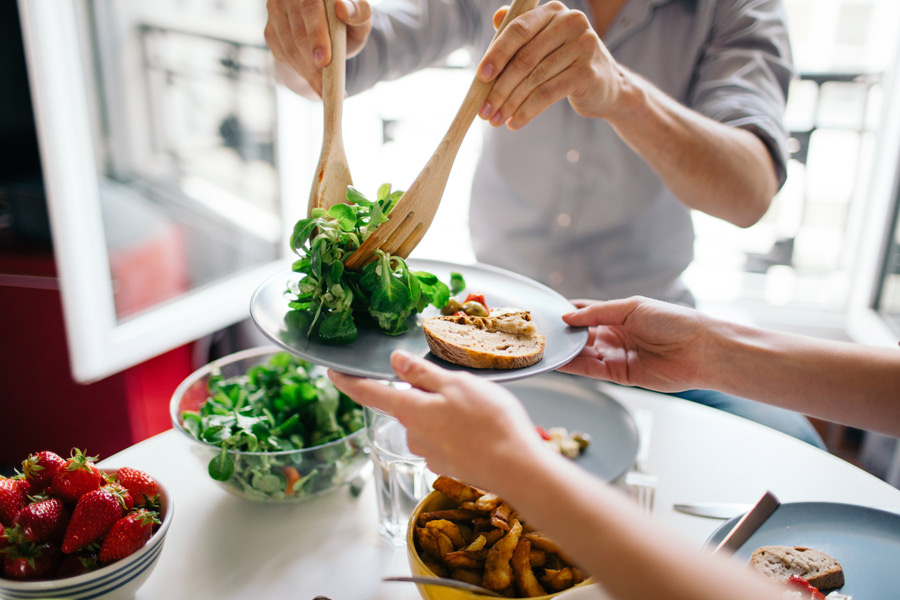
4. Pay Attention to Serving Size.
When you see that your favorite frozen yogurt only has 4 grams of fat per serving, be sure to check the serving size. The FDA has decided that a single serving of yogurt is only 1/2 cup. Most people eat at least 1 1/2 cups of their favorite yogurt or ice cream and thus in this example, eat 12 grams of fat. Before you buy any food, multiply a realistic serving size times the total grams of fat. If the food comes up high in fat, you may want to either limit the serving size or purchase something else.
5. Pay Attention to Fiber.
Move down the label until you come to "dietary fiber." Fiber is very beneficial to the human diet. A diet rich in fiber promotes fat loss when these high-fiber foods replace fats and sweets. This is possible because fibrous foods offer fewer calories per gram (4 calories/gram) than fat (9 calories/gram) are not easily converted to fat, and have the ability to expand up to 10 times their weight and size in the stomach. Thus, fiber makes us feel fuller and satisfied for a longer time. Fiber can give you an edge on weight management not only by satisfying your appetite, but also by slowing down calorie absorption and sustaining your energy levels. In addition, a high-fiber diet helps prevent hemorrhoids, diarrhea, appendicitis, and colon cancer. Fiber also helps lower cholesterol levels, decreasing the risk of heart disease. Most experts recommend that you get at least 25-30 grams of fiber a day. Therefore, when reading labels, remember, higher is always better.
Of course, not everything you'll want to eat or drink will be labeled. For example, nutrition labeling for many foods, such as fresh fruits and vegetables or fresh meat, poultry and fish is voluntary. And labeling on packaged foods under 12 square inches, such as miniature candy bars, is also voluntary. Remember, you are not counting and figuring out the fat percentage to decide if you should eat that food, but rather to learn from experience and become a more conscious eater. The more you practice and experience, the more you will learn and the easier it will be to gradually modify and decrease the fat in your foods.
In addition to having a clear understanding of a product's nutrition label, you should also understand exactly what the different health claims on products mean. The following is a list of health claims that are often misinterpreted by consumers:
Free: Example: fat-free. This means that the food product has so little of the nutrient in it that it would not even show up on your dietary screen (usually >.5 gram/serving).
Low: Example: low-calorie or low-fat. This means that the food product does not have much of a certain nutrient, but it has enough to make a difference in your diet. Specifically, low-fat means 3 grams or less of total fat; low-saturated fat means one gram or less; low-cholesterol means less than 20 milligrams; and low-calorie means 40 calories or fewer per serving.
Lean: This term refers to meat. Lean means one serving has less than 10 grams of total fat, 4 grams of saturated fat, and 95 milligrams of cholesterol.
Extra lean: This term also refers to meat. This means that one serving has less than 5 grams of total fat and 2 grams of saturated fat.
Less: This means there is 25 percent less of a certain ingredient or nutrient as compared to a similar product.
Reduced: This means the product was nutritionally altered to meet a health claim.
Shopping for low-fat, healthy food products and ingredients is absolutely critical to the success of your weight management program. When you come home from a hard day's work, the very last thing you'll want to do is slave over the stove cooking and preparing a healthy meal. You must develop a plan each week and have foods that are healthy and easy to put together in ten minutes or less. A great strategy for low-fat living is spending an hour or two each weekend preparing meals for the upcoming week so you can simply pop it in the microwave when you get home.
Before you go shopping, make a list of all the healthy meals and foods you enjoy eating. Also, check the pantry, refrigerator, and freezer for snacks and foods you'll need for low-fat recipes. Refer to the WF Healthy Recipes for new ideas. Taking time to create a healthy shopping list of foods you enjoy will help prevent you from making fattening impromptu choices.

Cooking and Baking
Cooking for yourself is one of the best ways to guarantee a well-balanced, low-fat meal. You are in control of what and how much you eat. Once you understand and use the healthy cooking strategies we teach, you'll be surprised how easy it is to eat low-fat. You'll discover that by making small changes to your favorite recipes, you can prepare a healthy, low-fat meal that tastes wonderful and provides you with more energy and satisfaction than ever before. Cooking with low-fat ingredients and techniques assures success with your weight management program. Here are some helpful tips on cutting out fat in common foods when cooking or baking.
Trimming the Fat on Meats
First, be sure to trim all visible fat off meats. Meats are very high in saturated fat which offers little additional value or flavor to the meal. Trimming the fat off is much easier if you put the meat in the freezer for about 20 minutes; this causes the fat to become more visible. Also, when cooking chicken or turkey, be sure to remove only visible fat, and take all the skin off. This will further reduce fat in the meal.
Pan Frying and Stir Frying
You can reduce unnecessary fat when cooking meats in several ways. First, and
most importantly, never deep fry your meat; this adds extra fat and hides the
meat's true flavor. If you do decide to pan fry, or stir fry in a wok, try using
nonstick cooking spray (nonfat) instead of oil. Wine, nonfat milk, juice, water,
herbs, and/or broth, in addition to cooking spray, work well to prevent the meat
from sticking and add flavor. Using a nonfat cooking spray and other nonfat
liquids adds very few calories and only a trace of fat to the meal, while using
just a tablespoon of butter adds 100 calories and 11 grams of fat, or 120
calories and 14 grams of fat with a tablespoon of oil. If you must use oil,
reduce the amount to half of what you would normally use and gradually reduce
that amount as well. Be sure to use an unsaturated oil, such as olive oil. And
use a nonstick pan so the light coating of oil will prevent food from burning.
If you make sure the oil is hot before adding the ingredients, you'll decrease
the amount of oil that soaks into your food.
Stir-frying in a wok or large frying pan allows you to be creative no matter what you have available: vegetables, meats, liquids, all provide unique flavors. It is also a great way to get vegetables into your meal. Stir-frying gives vegetables a crispy, tasty flavor and leaves them packed with their original nutrients because the cooking process is so fast.
For even better flavor with no added fat, try marinating your stir-fry ingredients. Try sweet and sour sauce, teriyaki sauce, nonfat dressing, or add garlic or ginger to your favorite nonfat liquid.
Make sure all your stir-fry ingredients finish cooking at the same time. Cut all the vegetables into pieces of the same size. The meat will take the longest to cook, so stir-fry it first, gradually adding the other ingredients. Delicate ingredients such as peas, tomatoes, mushrooms, and pineapple should be added last. Try serving your stir-fry on noodles or rice for additional complex carbohydrates.
Using the Oven
Meat also cooks well in the oven. This makes it crispy and brown on the outside and tender and juicy on the inside. Try coating the meat lightly with seasoned flour, bread crumbs, or crunched crackers (can be high-fat, check label), and place it on a rack set over a pan to catch the drippings. Cooking meat without a rack allows it to soak in its own fat, adding unnecessary fat and calories to your meal.
Use lower temperatures when cooking meats. Cooking meats at high temperatures causes them to be dry and tough and to lose some of their flavor. Cooking at 325 degrees for tender cuts and 275 degrees for medium tender cuts will retain the meat's moisture, reduce shrinkage, and prevent the fat from soaking back into the meat.
Less tender cuts of meat are best cooked in some sort of liquid to create flavorful meals. Marinating the meat for an hour or so helps tenderize and add flavor. You can marinate with wine, vinegar, citrus juice, yogurt, sweet and sour sauce, ketchup, barbecue sauce, and even beer. Be sure not to use salt or marinating sauces with high amounts of salt, such as soy sauce--it will draw out the moisture.
A low-fat gravy can be added for additional flavor, color, and moisture. Put ice cubes in the meat drippings to allow them to cool quickly. As they cool, the fat will rise to the top. Simply remove the fat with a spoon and thicken meat juices with flour and corn starch.

Barbecuing and Grilling
Grilling meats on the stove top and barbecuing are other great ways of preparing a low-fat meal. Always marinate your meat in your favorite barbecue sauce, after you have removed the skin. Also, barbecued or grilled skinless chicken breast chunks can be spread over a salad, a delicious way to enjoy meat and get your vegetables as well.
Try grilling or barbecuing tuna, salmon, swordfish, shark, or halibut steaks--they grill well because they don't fall apart like many fish fillets do. Also, marinate the fish fillets with a sauce made of lemon juice, nonfat milk, and nonfat tartar sauce.
When barbecuing or grilling a lean (select grade) steak, it is very important to marinate it for a few hours. Nonfat Italian dressing provides a great flavor and keeps the meat moist and tender. Barbecue and steak sauce also work well. Adding garlic to the marinade give the meat additional flavor.
Hamburgers and Ground Beef
Cutting out unwanted fat when making hamburgers, or ground beef in general, is also easy. First, try extra lean ground beef or turkey with less than 10 percent fat. Next, try mixing additional ingredients into the ground beef, such as chopped onion, carrots, bread crumbs, rice, nonfat cheese, oatmeal, chopped mushrooms, minced garlic, and other vegetables. This will add flavor and nutrients and will cut down on the amount of meat you are eating. Also, try baking the meat by adding fruit juice, barbecue sauce, vinegar, or sweet and sour sauce to keep the meat moist and full of flavor.
After hamburger patties are cooked, place them on a plate covered with a paper towel. Then put another paper towel on top and blot up the grease. Once you have wiped all excess grease off, place the leftovers in the refrigerator over night. Leftover fat will harden and can be easily scraped off and the meat reheated.
When cooking ground beef for casseroles, sauces, lasagna, or tacos, place the cooked meat into a colander and rinse with hot water. The water will wash away fat while leaving more important nutrients. Wrap the ground beef in a paper towel, squeeze out the excess water, and add the meat to the recipe.

Vegetables
Because of the many health benefits of vegetables (http://womenfitness.net/wfmember/programs/articles/veggie.htm), it is recommended that a healthy diet should contain at least three to five servings of vegetables a day. Of course, when vegetables are fried in oil or soaked in butter or rich sauces they are not nutritionally much better than a bowl of chips. It is important to use the right cooking techniques to minimize nutrient loss. This way your meals will not only be tasty but also rich in vitamins, minerals, and fiber. The best methods of cooking vegetables are barbecuing, microwaving, steaming, and stir-frying which was already discussed above.
Barbecuing Vegetables
Barbecuing vegetables is a great way to add extra flavor and still retain all the wonderful nutrients. Try marinating your vegetables in a barbecue sauce or a nonfat dressing rather than spreading oil or butter onto the food. You may want to use a nonfat cooking spray to prevent vegetables from sticking to the grill.
Onions, peppers, summer squash, mushrooms, eggplant, and cucumbers all work well on the barbecue. Char, let them cool, then peel the black stuff off and add to your favorite barbecued lean meat or salads, or eat with toasted bread.
Corn on the cob also works great on the barbecue. First, shuck the ears and let them soak in water for 20 minutes then cook over low coals.
Eggplant is especially delicious on the barbecue. Wrap the whole eggplant in aluminum foil and put it on the grill for 12 to 15 minutes. Then let cool, peel away the skin, and place the eggplant on a baked potato or a sandwich.
Microwave Cooking
Microwave ovens are not only fast and convenient, they also help retain many of the nutrients lost during other cooking methods, such as boiling. In addition, you don't have to add butter or oil to keep them from sticking or burning. Microwaves work well for heating up leftovers or homemade frozen dinners. Microwave vegetables are easy. Simply place the vegetables on a plate or in a plastic container, add a few drops of water to create steam, and put plastic wrap over the top. Microwave until they are the desired consistency--check every 30 seconds.

Steaming
Steaming, like microwaving, can cook food fast with no oil or butter added. In addition, using steam helps preserve the food's natural color, flavor, and those nutrients lost during boiling. To steam vegetables, first allow the water to boil, then add the vegetables and put the lid on. The water shouldn't come in contact with the vegetables--this will boil them and remove their nutrients.
Soups
Most commercially made soups are fattening and loaded with salt. Homemade soups can be delicious, low-fat, and loaded with nutrients. Combine lean meats, whole grains, beans, pasta, and vegetables to produce a variety of wonderfully satisfying soups, that aren't fattening. Avoid making cream-based soups such as cream of mushroom, chowder, or cream or broccoli. Soups make a good start to a full meal or the main course with whole-wheat bread and a salad. You can even take soup with you to work in a thermos for a delicious meal whenever you get hungry.
Here are helpful tips for reducing fat in your favorite soups. Often during preparation fat will rise to the surface; it can be easily removed with a slotted spoon or ladle. Store the soup in the refrigerator; the fat will then rise to the top in a waxy film that can be easily spooned off the next day. When there is no time to refrigerate the soup, simply place ice cubes in the warm (not hot) pot of soup and let the cubes remain for a few seconds. Then remove the ice cubes--the fat will have clung to them. If a recipe calls for beef, pork, or poultry, use the leanest cuts available and trim off any visible fats. For example, use white breast meat instead of dark meat when adding chicken or turkey. If you have to brown the meat before adding it to the soup, be sure to drain off any fat before placing the meat in the soup pot.
If you use canned broth for your soups, check to see if any fat is floating on the top. Simply spoon out the small lumps of fat so that you have a nonfat broth. You can also purchase a nonfat broth.
If a recipe calls for milk, substitute either low-fat (1 percent) or nonfat (skim) milk. If the recipe calls for cream, substitute evaporated skim milk. You may also want to try adding two or three tablespoons of instant nonfat dry milk powder for a richer taste.
If the recipe calls for cheese, substitute a nonfat or low-fat version. When using nonfat cheese, use a processed cheese; these melt much better when cooking. If the recipe calls for sour cream, substitute a reduced-fat or nonfat brand for the higher-fat version, or use low/nonfat yogurt.

Baking
Every WF Healthy Recipe is both delicious and low in fat. These will help you prepare well-balanced meals that leave you feeling both energized and satisfied. However, please realize that any recipe, even your favorite most fattening recipe, can be changed into a low-fat or even nonfat recipe. Once you have mastered the low-fat shopping and cooking techniques, you'll find it very easy to take any recipe out of a book and turn it into a delicious, healthy meal. The following techniques can reduce the amount of fat in your favorite recipe.
Avoid overbaking. The most common complaint people have about reduced-fat baked goods is that they are too dry. Low-fat foods bake more quickly than those made with fat. If you bake them at the same temperature or leave them in the oven as long as you would for the regular recipe, they will dry out. Bake them at least 25 degrees cooler and check their progress five minutes sooner, inserting a tooth pick in the center of the food. When the toothpick comes out clean, remove the food from the oven.
Most baking recipes call for butter, margarine, or oil. Several more nutritious foods can replace these fattening ingredients. Try using reduced-fat margarine or butter. These products still have fat, about five grams per tablespoon (fat-full brands contain 11 grams). These reduced fat margarines and butters are diluted with water. Therefore, they shouldn't be substituted for the fat-full kinds on a one-to-one ratio. To compensate for the extra water, substitute 3/4 as much of the fat-reduced product for the regular brands. For example, if a brownie recipe calls for one cup of butter or margarine, use 3/4 cup of the reduced fat version. Please note, nonfat butters and margarines do not work well in baking--the water content is too high, resulting in a very dry finished product.
Another great way of cutting out half the fat in a recipe is simply to replace the butter, margarine, or other fat sources with half as much oil. For example, if a cake calls for one cup of butter, simply leave out the butter and add a half cup of unsaturated oil. Remember to bake 25 degrees cooler and check the cake a few minutes before the usual end time.
When baking brownies, try replacing the butter, margarine, or other fat source with chocolate syrup, prune butter, or canned pumpkin. Use honey, fruit juice concentrates, or fruit jam instead of butter or margarine when making oatmeal cookies and molasses or maple syrup when baking spice cookies.
Instead of using whole eggs, try egg whites or fat-free egg substitute. Substitute three egg whites for one whole egg.
Use 1/3-1/2 the amount of oil called for in most recipes. Also, try replacing oil with apple juice, apple sauce, milk, or yogurt.
Many recipes call for nuts, and for good reason. They add both flavor and texture (crunch) to the meal or baked good. Unfortunately, nuts are loaded with fat. Try toasting the nuts before you add them to the recipe. Toasting intensifies the flavor of nuts so much that you can usually get away with cutting the amount called for in the recipe by half. Simply arrange the nuts on a cookie sheet, and bake for about 10 minutes at 325 degrees.
Many desserts are made with cream, also very fattening. One cup of cream contains almost 90 grams of fat and over 800 calories. To replace it, simply use an equal amount of evaporated milk. You can also try one cup of skim milk plus 1/3 cup of instant nonfat dry milk powder for each cup of cream.

Dinning Out
Many people enjoy going out to eat. Unfortunately many people throw their 25 percent or less fat budget out the window. Even worse, many eat unbalanced meals and/or binge when eating out. Some people will even skip breakfast and lunch to compensate for the extra calories they will consume when going out for dinner. By the time dinner rolls around, they are so hungry they make unwise choices and overeat. Try to eat regular frequent meals during the day--don't starve yourself to compensate for your dinner plans. You will feel more energized throughout the day rather than weak and hungry, waiting to devour an unbalanced high-fat meal at dinner time. Also, if you know you will be really hungry before a dinner engagement, eat a healthy snack to hold you over. This will allow you to arrive at the meal pleasantly hungry so you can relax, eat slowly and enjoy the meal rather than eating anything and everything in sight. Being famished leads to quick eating, which doesn't allow you to enjoy your meal. A pleasant hunger results in enjoying the meal thoroughly.
Be sure to order what you really want when eating out. If you only order what you think you "should" rather than what you really want, you may be physically satisfied but not psychologically satisfied; you will most likely crave something more. If the meal is not enjoyable or satisfying, you may end up ordering a dessert (that you normally would not order) to fulfill your cravings. Remember, you can still eat the foods you love; just try to be creative and cut down on the fattening "extras" (butter, sour cream, etc.) that are not needed in order to enjoy the meal.
The most important point to remember when eating out the low-fat way is that you are the paying customer and you can request the way the food is prepared. Unless you say something in advance, your food will probably not contain less than 25 percent fat. Restaurants are in the business of making food taste good, which often means high-fat. But they are also in the business of giving their customers what they want. The following is a list of things to tell the waiter if you want to reduce the fat in your meal:
- Could I have that with white breast meat instead of dark meat, please?
- Could you please ask the chef to go light on the cheese (oil, butter, cream, etc.)?
- Could I have my fish poached (grilled, baked, broiled, etc.) please, and will you add vinegar or lemon juice to it?
- Could I have my baked potato with everything on the side, and could you add a side of sweet and sour sauce, low/nonfat dressing, or salsa please?
- Could I please have 1/2 the amount of meat on my sandwich?
- Could I please have my sandwich without cheese and mayonnaise and with tomatoes and mustard?
- I'd like your low/nonfat dressing on the side, please?
- Can you steam the vegetables without butter, please?
- Would you please make my omelet with "fat-free egg substitute" please, or with only one whole egg and two or three egg whites (instead of 3 whole eggs)?
- Could I have my toast served dry with jam on the side, please?
- May I get this boxed-up please?
- Could I please have a baked potato (soup or salad) instead of French fries?
- Could I have whole-grain wheat bread?
- Does this dish contain cheese, oil, butter, creamy sauce, or anything else that would increase the fat content?
- Could I substitute marinara sauce for the alfredo sauce, please?
- Could I please have my sweet and sour chicken sauteed or stir-fried rather than deep-fried, please?
- Could you box up half of my meal and serve the other half, please?
Use non-diet thinking; avoid the diet mentality. Diet thinking is irrational and unhealthy: "I better eat as much dessert as I can now because tomorrow I am going back on my diet," or "I'm full but I'll still have a piece of cake and ice cream; I will work out extra hard tomorrow to work it off." Replace these statements with the following healthier ones: "I'll take a small piece of cake because I really want it. If I don't I will feel deprived and will most likely binge later." "I really feel full. I would be eating just to eat. I am so full I probably wouldn't enjoy it anyway. Maybe I could take a piece home for another day when I would enjoy it more." Non-diet, healthy people are more selective with their choices, and they pay attention to their internal signals of hunger. They still eat what they want (being creative and limiting the extras) and they may eat a little more than usual, but their regular eating habits prevent them from unintentionally bingeing or overeating.